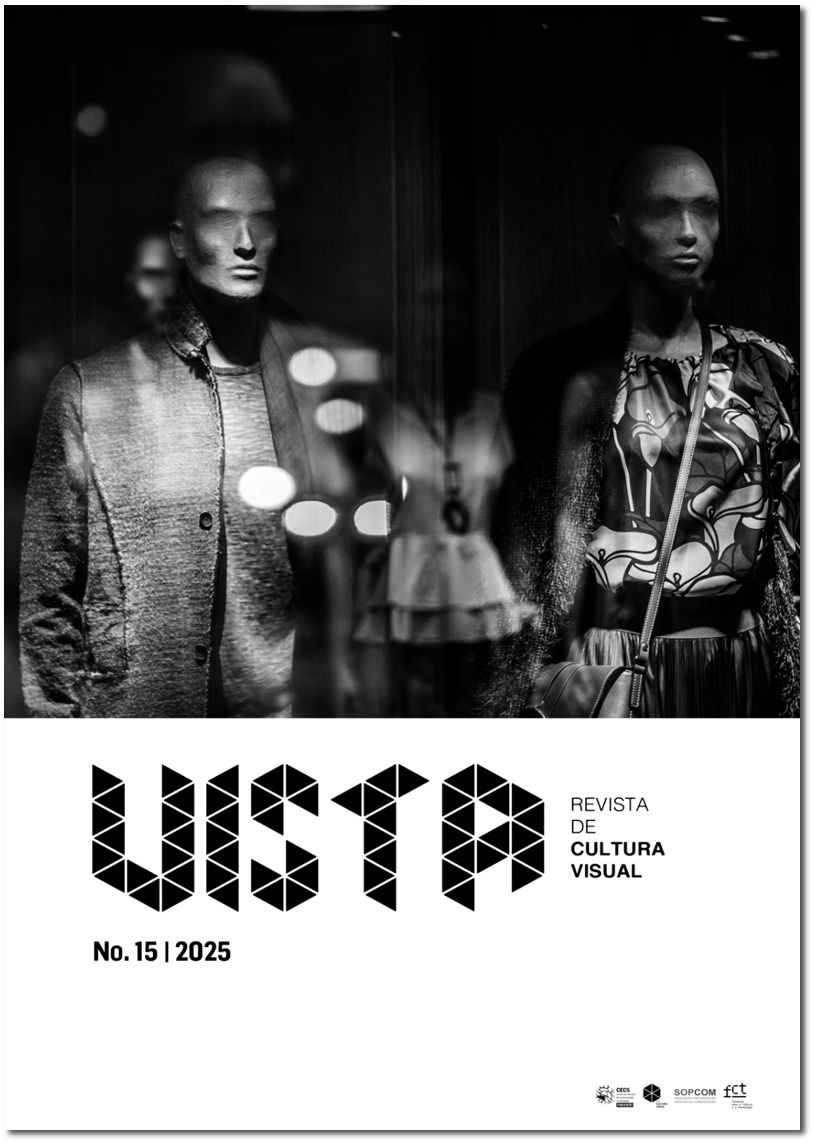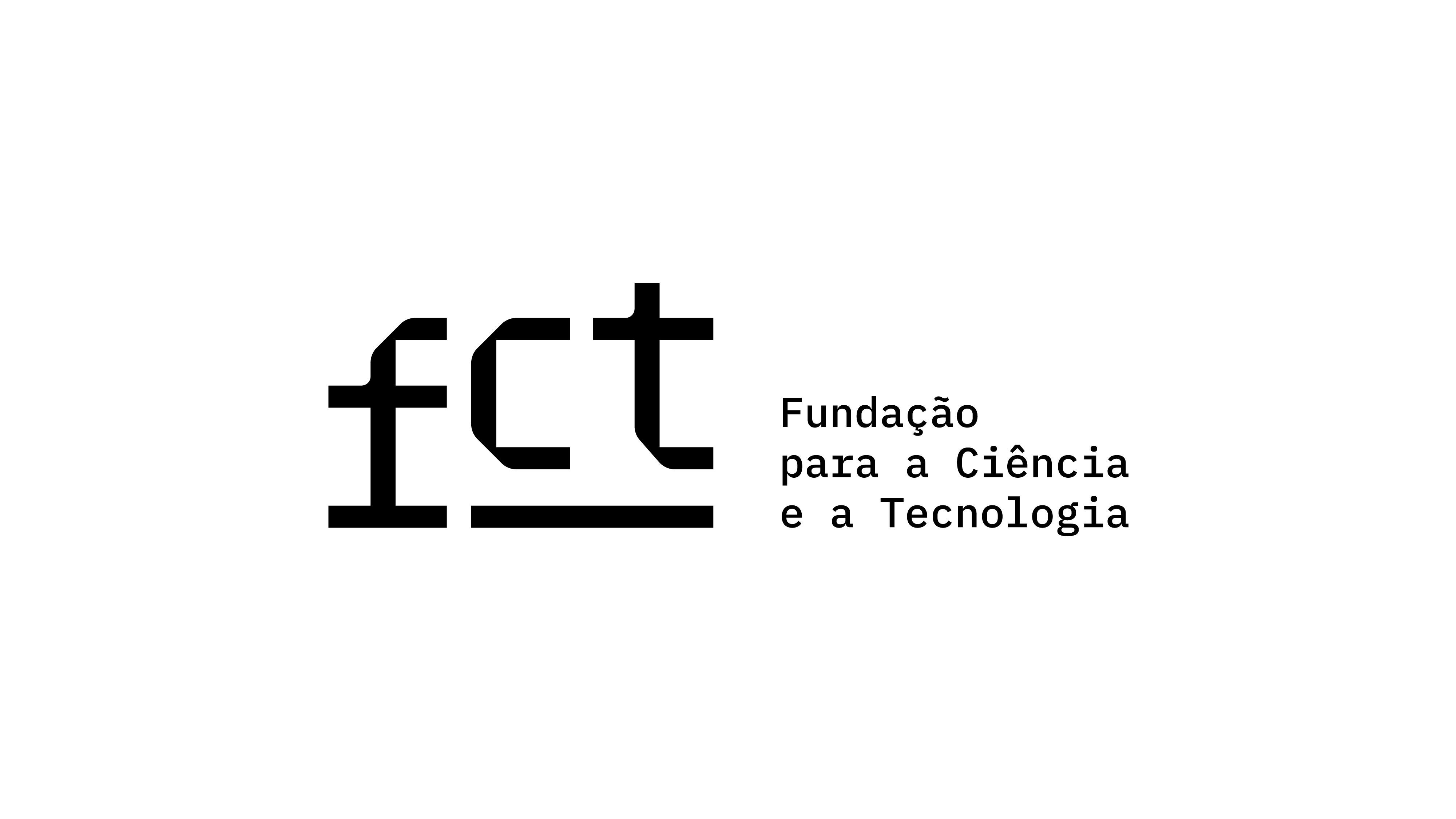Putting on the Glasses: Cosmotechnics of Dressing in Nordeste Futurista
DOI:
https://doi.org/10.21814/vista.6281Keywords:
Nordeste Futurista, clothing technology, cosmotechnics, aestheticsAbstract
This article analyses the first two tracks of the visual album Nordeste Futurista (Futuristic Northeast) by artist Luana Flores, exploring how clothing and art direction are fundamental elements in establishing the “futuristic” narrative that the work projects onto the territory, challenging stereotypical representations of the Brazilian Northeast. Through the lens of cosmotechnics (Hui, 2020), the study examines how Flores’ work aesthetically dissolves the supposed opposition between ancestral and contemporary technologies in dialogue with quilombola and Indigenous cultures of the region. The analysis focuses on clothing as an element in the construction of an aesthetic discourse that challenges colonial imaginaries of underdevelopment, also appropriating the futuristic imagery of classic science fiction cinema. In this investigation, clothing technology is thought of as “cosmotechnics”, a theory proposed by philosopher Yuk Hui (2020) that refers to technology manifested in different forms, as it always emerges and carries within itself specific cosmologies and contexts, questioning the vision of a single, universal technology that is more or less “advanced”. The article examines the use of wearable artefacts such as virtual reality glasses, woven straw hats and fabrics such as chita (floral printed cotton), demonstrating how these elements carry cultural and historical meanings while at the same time being re-signified in a “futuristic” context. Challenging the neutrality of coloniality of seeing (Barriendos, 2019), we present some visual representations of the Brazilian Northeast that have been historically distorted to legitimise practices of domination. By analysing the aesthetics of the visual album Nordeste Futurista, this study seeks to disrupt the standardised imagery of the Northeast region of Brazil, which dialogues with the underdeveloped imagery of Latin America, emphasising the local cultural potential and the importance of recognising Indigenous and quilombola cosmotechnics in our daily lives and the construction of possible futures.
Downloads
References
Acom, A. C. (2023a). Cangaceiros e sua existência ético-estética: Entre dândis do sertão e banditismo social. dObra[s] – Revista da Associação Brasileira de Estudos de Pesquisas em Moda, (39), 38–60. https://doi.org/10.26563/dobras.i39.1652
Acom, A. C. (2023b). O ser e a moda: A metafísica do vestir. Estação das Letras e Cores.
Acom, A. C. & Moraes, D. R. (2021). O ser da moda entre corpo e tecnologia: Uma fenomenologia do portátil. ModaPalavra, 14(3), 216–246.
Appadurai, A. (2008). A vida social das coisas: As mercadorias sob uma perspectiva cultural (A. Bacelar, Trad.). Eduff. (Trabalho original publicado em 1986)
Aroca Araújo, A. (2009). Geometría en las mochilas arhuacas: Por una enseñanza de las matemáticas desde una perspectiva cultural. Programa Editorial Universidad del Valle.
Barriendos, J. (2019). A colonialidade do ver: Rumo a um novo diálogo visual interepistêmico. Epistemologias do Sul, 3(1), 38–56.
Bosak, J. (2023). Museu portátil, ou a poética da moda encarnada. In A. C. Acom, C. B. Grippa, J. Bosak , & P. G. Alves (Eds.), Museus portáteis e outras histórias da arte-moda (pp. 186–196). EdUnila.
Chioccarello, R (2022, 29 de julho). Luana Flores: Nordeste Futurista e a força de um filme-manifesto. Portal Hits Perdidos. https://hitsperdidos.com/2022/07/29/luana-flores-nordeste-futurista-filme/
Costa, M. (2022). Olhe para mim de novo: Corpos, territórios, rotas e desvios do sertão nordestino [Tese de doutoramento, Universidade Federal do Rio de Janeiro].
Garcia, M. C., Miguel, A. C., & Szaniecki, B. P. (2019, 1–4 de setembro). O papel da tecnologia nos processos de produção da chita brasileira [Apresentação de comunicação]. 15º Colóquio de Moda, Porto Alegre, Brasil.
Gonçalves, J. R. S. (2007). Antropologia dos objetos: Coleções, museus e patrimônios. IPHAN.
Harrison, C. (2014). The visual album as a hybrid art-form: A case study of traditional, personal, and allusive narratives in Beyoncé. Lund University.
Hui, Y. (2020). Tecnodiversidade (H. do Amaral, Trad.). Ubu Editora.
Kopytoff, I (2008). A biografia cultural das coisas: A mercantilização como processo (A. Bacelar, Trad.). In A. Appadurai (Ed.), A vida social das coisas: As mercadorias sob uma perspectiva cultural (pp. 89–121). Eduff. (Trabalho original publicado em 1986)
Krenak, A. (2022). Futuro ancestral. Editora Companhia das Letras.
La Rocca, F. (2008). L’infiltration technologique dans l’espace urbain. Logos 29, 16(2), 61–70.
Le Guin, U. K (1989). Dancing on the edge of the world: Thoughts on words, women, places. Grove Press.
Marías, J. (1970). Antropología metafísica: La estructura empírica de la vida humana. Ediciones de La Revista de Occidente.
Merlini, F., & La Rocca, F. (2019). Les dimensions esthétiques des objets. Dialogue entre Fabio Merlini et Fabio La Rocca. Sociétés. 144(2), 39–45. https://doi.org/10.3917/soc.144.0039
Nascimento, B. (2021). Uma história feita por mãos negras. Editora Schwarcz.
Novíssimo Edgar. (2022, 23 de março). Edgar - Bíblia, Boi e Bala | videoclipe oficial [Vídeo]. YouTube. https://www.youtube.com/watch?v=_OCYPhIJdBc
Rocha, M. D., & Queiroz, M. (2010, 12–15 de setembro) O significado da cor na estampa do tecido popular: A chita como estudo de caso[Apresentação de comunicação]. VI Colóquio de Moda, São Paulo, Brasil.
Simondon, G. (1958). Du mode d’existence des objets techniques. Aubier.
Santos, A. B. (2023). A terra dá, a terra quer. Ubu Editora.
Santos, F., & Mendes, F. (2023). Visualidades e identidade cultural: O tecido chita e o movimento feminista camponês do MST. In Anais do 18º Colóquio de Moda (pp. 1–9). FEM.
Downloads
Published
How to Cite
Issue
Section
License
Copyright (c) 2025 Lara Victoria Sorbille, Ana Carolina Acom

This work is licensed under a Creative Commons Attribution 4.0 International License.
Authors own the copyright, providing the journal with the right of first publication. The work is licensed under a Creative Commons Attribution 4.0 International License.













